Student Academic Discipline System Capstone Project Document
Introduction
There is a value of discipline in all aspects of life. Whether we are at home, school, or even at work discipline is a necessity. Discipline gives us an opportunity to learn, build a positive character, and control our strengths and weaknesses. According to Webster’s Third International Dictionary, the word discipline is defined as “training that corrects molds, strengthens or perfects the mental faculties or moral character. In connection with this, we need to follow a certain policy in order to maintain social order or a violence-free community. And it will start with how we define the word discipline.
The ABC Student Academic Discipline System consists of attributes that explain Student Violations and their corresponding disciplinary actions. The system will provide all the student records who commit violations in both academic and discipline. The system will base the list of violations and corresponding disciplinary actions on the College Handbook.
The management of records is an essential part of any organization. The purpose of the study is to develop an automated system that will provide a secure way of keeping student violation records and determine a list of violations committed by the students both in Academic and Discipline violations.
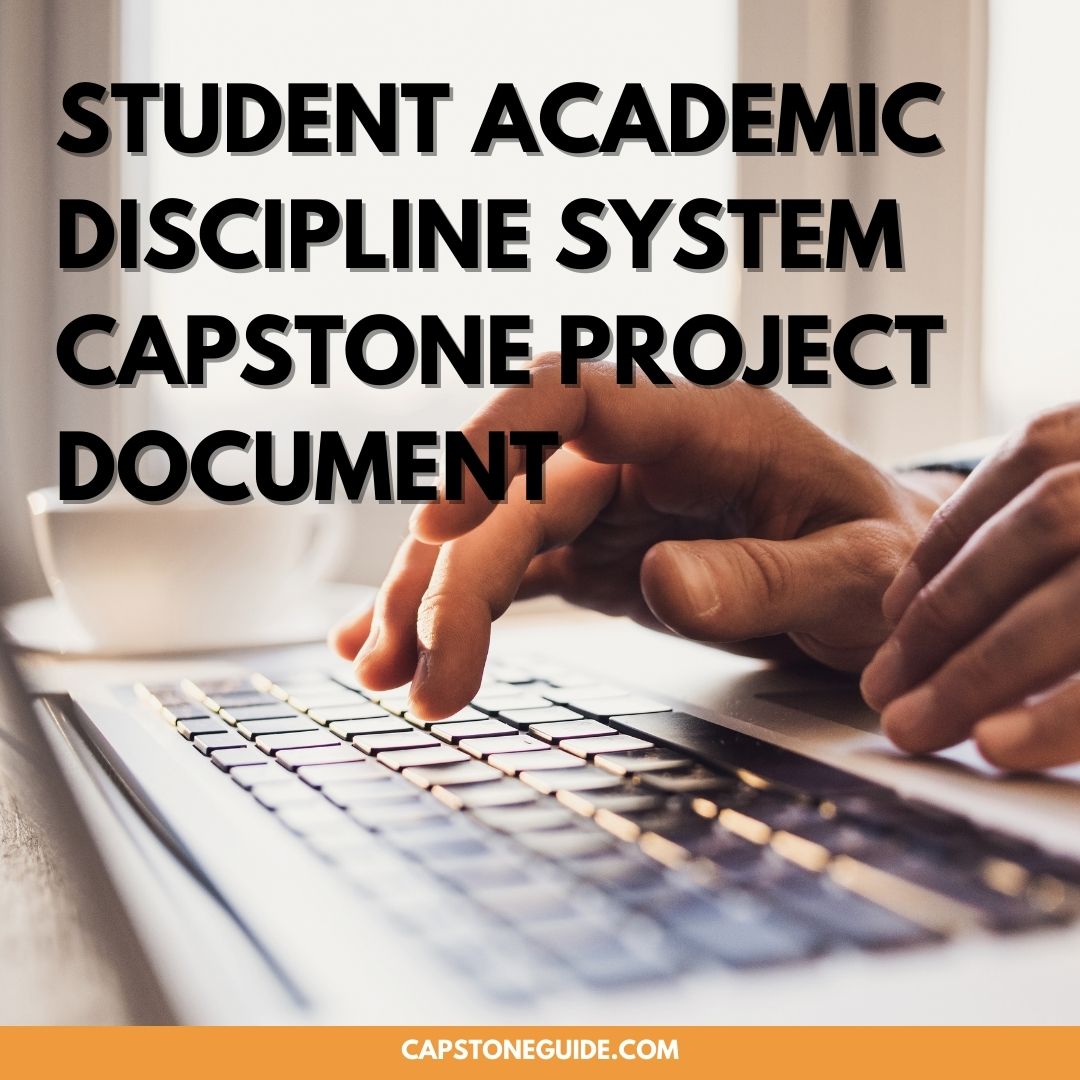
Student Academic Discipline System Capstone Project Document
Background of the Study
In today’s generation, most management implies an automated way of managing and storing data. ABC aims to be the center of excellence in producing students who are both competitive in modern technology and business management and some of its existing systems already made positive changes to help the school. It only shows that the school is now on its way to entering the advancement in technology.
The proponents conducted an interview with some school officials whose work is related to the said study such as the OSA (Office of the Student Affairs) Coordinator, Discipline Officer, and Security personnel. The study identified the major problems faced by the use of manual filing in managing student violation records and the proponents are attempting to solve them by developing the ABC Student Academic Discipline System.
Statement of the Objective
General Objective
To develop an automated system for monitoring students’ Academic Discipline Records through the implementation of a local area network (LAN) in terms of Effectiveness, Efficiency, Quality, Timeliness, and Productivity of the system.
Specific Objectives
- To determine the list of violations committed by the students both in Academic and Discipline Violation.
- To identify the list of the students that commit violations in terms of:
- Academic Violation
- Discipline Violation
- To determine a secure way of keeping student violation records.
- To determine a timely update of the list of students that commit violations regarding:
- Academic Violation
- Discipline Violation
- To develop a system that is LAN –based for an easier way of sharing resources of student academic and discipline violation records to the following school personnel.
- OSA Coordinator
- Discipline Officer
- Security Personnel
Conceptual Framework
This study aims to develop an automated system for monitoring student violations and to have a fair and effective mechanism for resolving cases in which a student is alleged to have violated the school policies. The ABC Student Academic Violation System is a local system that is designed to be used by the school Security Personnel, Discipline Officer, and Guidance Counselor. This system will save all the reports of student behavior which will be forwarded to the school Discipline Officer and OSA Coordinator whom will determine the appropriate resolution to the case. Resolutions will be based on the school’s student handbook and may include disciplinary actions, community service, and expulsion depending on the gravity of the committed violation.
Figure 1: Conceptual Framework of the Study
Scope and Delimitation of the Study
This section enumerates the scope covered by the study and its delimitation.
Scope
- The system will cover the monitoring process of student violations regarding:
- Academic Violation
- Discipline Violation
- The system can provide easy access to students’ academic and discipline violations records.
- The system can store and back up student violations information and data.
- The system can generate a tabulation report of student violations regarding:
- Academic Violation
- Discipline Violation
Delimitation
- The system is limited in providing a Good Moral report but can be used as a basis only.
- The system is limited to providing direct automated SMS information to the parents.
- The system can only be operated in the Local Area Network (LAN).
- The system is only designed for school Academic Discipline Violations.
Significance of the Study
In any organization, the computer is a necessity. Having an automated system is important to do tasks easily and efficiently. This study aims to provide benefits to the following sets of people or organizations:
OSA Coordinator: This system is developed to help in speeding up the process resulting from eliminating the delays caused by manual checking of each student’s academic violation records. It will also help the OSA Coordinator to have easy access to monitoring the student academic violations.
Discipline Officer: This system is developed to help in speeding up the process resulting from eliminating the delays caused by manual checking of each student’s discipline violation records. This will also help the discipline officer to have easy access to monitoring the student discipline violations.
School Security Personnel: This study identified the major problems faced by them using the manual filing of records. Through this paper-based filing will be eliminated which will help them to have a more secure way of keeping data and speed up the process of monitoring students’ discipline violations.
Students: This system is developed to provide them with a fair and effective mechanism for resolving cases in which they are alleged to have violated the school policies. This will help the students to be aware of their violations in both academic and discipline.
Proponents: This system will enable them to apply what they have studied and researched. Studying the proposed system will also give them benefits by enhancing their knowledge and skill in developing a system, especially in presenting accurate data.
Future Researcher: This system will provide a basis for future researchers who may experience a related system. Through this, it will help them understand how the system works wherein they can identify what are the things they can add to make the system improve for future use.
Definition of Terms
The definitions of terms are based on concepts or hypothetic ones, which are usually taken from the dictionary or web.
Academic: Acquired by formal education, especially at a college or university. (“dictionary.com,” n.d.)
Operationally this term refers to a kind of violation observed inside the classroom such as cheating during examinations or quizzes, leaving the room without permission from the instructor while class is going on, etc.
Automated: A system of operating or controlling a process by highly automatic means, such as electronic devices reducing human intervention to a minimum. (Abdul, n.d.)
Operationally this term refers to a system operated automatically or computer-based.
Database: A collection of information that is organized so that it can be easily accessed, manage, and updated. (Rouse, 2017)
Operationally this term is used in the study where all the data are stored such as the student profiles, violation records, and violation reports.
Paper-based. Using paper rather than the electronic system. (“Financial Times Lexicon,” n.d.)
Operationally this term used in the study refers to a system that keeps and manages information on paper instead of a computer.
System: A set of components or actors that works as a whole to transform resources (inputs) into products and wastes (outputs). (Robinson, 2015)
Operationally this term used in the study refers to a set of detailed methods or procedures of all student records in terms of Academic and Discipline Violations.
Violation: An action that breaks or acts against something, especially a law, agreement, principle, or something that should be treated with respect. (“Cambridge Dictionary”, n.d)
Operationally this term used in the study refers to a student activity that is inappropriate inside the school area that will result in breaking the school rules or policies.
Related Literature
This chapter primarily presents an overview of different researches and other literature from both foreign and local types of research that will explain the different concepts, ideas, conclusions, and different development related to the study of the Academic Discipline System which will serve as a guide for the researchers in developing the project. This chapter will help as well in familiarizing information that is related to and similar to the present study.
Local Studies
Student Violation Monitoring System of Bernardo College
This study focuses on the collection and evaluation of evidence on students’ behavior or attitudes such as to conduct, performance, and misdemeanor. Bernardo College uses a monitoring sheet and Call slip to monitor, manage, count, and evaluate the student’s offenses and sanctions in a manual way. Because of this kind of process, the Prefect of Discipline spends more time and effort on tallying the student’s offenses such as late, absences, and misconducts. The authorized personnel must record manually to papers for backup purposes and place the data in the filing cabinet of the Company. In that process, it may have some possibilities that the files and records will be lost due to system functionality.
The general objective of the study is to develop a Student Violation Monitoring System for Bernardo College to help the high school monitor the offenses of the students efficiently using the database and creating a backup and restore program. The researchers aim to develop a Student Violation Monitoring System that will benefit the school for consistent monitoring of violations and accurate record of the student’s offenses. (“Thesis Presentation,” 2012)
Student Profiling System
Student’s Profiling System is a system that is being developed for managing and keeping demographic information about a particular student which is also related to their behavioral status inside the school. The goal of using this Students’ Profiling System is to have an efficient way of managing and keeping confidential information of the students.
This will be a big help for the institution and to the Guidance Office Personnel because they will no longer use the manual way of updating and managing all college students’ confidential information.
The main objective of the study is to develop a Student Profiling System for the Guidance Office. The study also aims to provide the Guidance Office Personnel with an easy way of managing and updating all college students’ profiles by using the Students’ Profiling System. Guidance Office will also have an easy and reliable system for keeping students’ records and assessing students’ behavior. Lastly, it will keep all the confidential data of the student safe and secured. (“Student Profiling Information System in Guidance Office,” n.d.)
Foreign Studies
Holmen Middle School Behavior Intervention System
The HMS Discipline System is a restorative justice model that focuses on helping students take responsibility for their behaviors and repairing and restoring relationships. The goal of the study is to create internal change that will help guide students in their decision-making both in and out of school. They believe that students are happier, more productive, and more likely to make a positive change when those in positions of authority are working with students. We work hard to build the connections, understanding, and shared values that make HMS a great place to attend school.
Students can get referred to the office in two ways. First, is the Staff–Managed Referral where school staff will fill this out to describe behaviors in the classroom that are of concern but are able to be handled in the classroom without administrator involvement. Second, Office –Managed Referral forms for behaviors that need administrative involvement.
After a student has had multiple discipline referrals they are referred for additional interventions such s Check-In / Check-Out, or Social Academic Instruction Groups (SAIG). An Educational Service Team (EST) may also be convened with staff and parents to see how we can work together to help students behave appropriately while they are at school. (“Discipline System / Discipline System,” n.d.)
Student Record Management System (Livingstone International University)
This study aimed at establishing, and improving Student Record Management System at Livingstone International University. Specifically, this study required finding the data collection of student records in Livingstone International University, to improve the impact of information protection of student records, and finally, it was done to establish the improvement of computerized information management of student records in the university.
The student records management system is the SRMS will hold the business in its goal of a paperless office environment. From the acronym itself, the SRMS is a management process that will protect information and data to ensure that all the records and the files in the system database of the business organization are protected and easily accessed by users in the framework. In the shortest definition of the automated records management system, it is simply that process that is employed by the organization in the maintenance of records and files from the very moment that they arrive at the business or were created by the enterprise up to the period when they will be deemed ready for eradication and deletion from the archived or active databases. The records handled by the student records management system may come in tangible forms that will be translated to digital formats with the use of the latest technologies in the market.
The proposed system should be able to stand the test of time because student records should be kept as long as is necessary to fulfill and discharge the contractual obligations established between the institution and the students, including the completion of any non-academic disciplinary action. It will provide information as well on the academic career and achievements of the students to employers, licensing bodies, and other organizations. (Juliet Nandutu, 13:22:02 UTC)
Related Systems
Table 1: Related System
Table 1: Shows the features of the proposed system in the first column, whereas the following columns are the features of the related systems. This also shows the system features where it indicates the advantage of the proposed system.
Synthesis
Knowing the systems process and criteria will help us understand the natural flow of a project. With the above-mentioned studies that were acquired from both local and foreign systems, the research shows that the related systems presented share similar nature to the study. It focuses more on a secure way of keeping data and confidential information and providing direction in the construction of data collection tools from a manual process to automation.
Through this, the proponents were able to identify some opportunities that need to be improved and make the proposed study more accurate and advanced. The concept and ideas of the following studies also help the proponents in developing some features that they can add that will be more beneficial to the school which will serve as the recipient of the proposed study.
Furthermore, the mentioned related studies raised the opportunities for articulating a critical analysis of the actual function of the proposed system that will result in an efficient and effective operation of the system.
Methodology
This chapter deals with the methods used by the proponents in developing the system, which describes the different methods, techniques, and systematic approaches used in the analysis and the design of the representation.
The system development involved the use of the System Developmental Life Cycle (SDLC) which is the conceptual model used in project management. The SDLC describes the stages involved in an information system development project from the initial planning of the study through the maintenance of the completed system. The software life cycle is a descriptive representation of a software life cycle. It represents all the activities required to make a software product transits through its life cycle phases.
The proponents follow the Agile Software Development life cycle model as this model emphasizes planning at early stages and software is developed in rapid cycles. This results in small incremental releases each release building on previous functionality. Each release is thoroughly tested to ensure software quality is maintained.
The model begins with the sprint planning phase, followed by the development, and continues with the testing and demonstration or delivery.
Following are the steps in SDLC and the different activities done in this study for each of the phases:
Sprint Planning Phase
The sprint planning phase is the most critical part of completing the software development. The proponents used several instruments in gathering the data needed for the study. The proponents begin with a sprint planning meeting to lay out components for the upcoming round of work. The project leader assigned each member roles and each of their responsibility. For data gathering, the researchers of the group conducts an interview and gathered information from the school OSA Coordinator, Discipline Officer, and Security personnel to analyze the difference between the existing system and the developed ones. The problem that was identified in the existing system was studied carefully by the proponents in order to figure out the solution for the current process and to create objectives. After all the information where gathered, the project leader start to work on Chapter 1 as the researcher’s task to work on Chapter 2 for related studies. In sprint planning, the problem in the existing system was identified to understand the operation of the present and evaluate the difference between the developed system and the existing one. At the end of this phase, there will be a review to check the progress to approve or reject the work done according to the pre-defined data and findings.
Development Phase
In this phase, the proponents gathered all the information in the preceding phase that will allow them to develop a design for a new and improved system. The project leader started to work on Chapter 3 which begins with the System Methodology Modeling as he assigned the two Researchers together with the Programmer to work on the following diagrams such as the Data Flow Diagram, Entity Relationship Diagram, and the Cost Benefits Analysis. The following diagrams and figures will showcase how the proposed system works and what are the requirements needed for the development. Development also includes creating and testing databases, coding, preparing test files, and compiling and refining programs. The programmer made it possible through the use of developed programming languages such as JavaScript, PHP, HTML5, and jQuery. In this phase, the design and development of the proposed system will be made possible in the accordance with approved data and findings in the planning phase.
Testing Phase
In this phase, the proponents will cover the process of testing the efficiency, accuracy, reliability, speed, and security of the system. This phase also determined if the design specification of the developed system are met. The proponents conducted tests for the developed system together with the school personnel involved in the study to rate the system. The proponent used a User Acceptance Survey form as a tool for guidelines that will test the system’s Effectiveness, Efficiency, Quality, Timeliness, and Productivity. The project leader together with the researchers begins to work on Chapter 4 which is the Presentation, Analysis, and Interpretation of data to complete through the testing and documentation before demonstration or delivery.
Demonstration or Delivery Phase
In this phase, the system was already implemented with minimum requirements. It was already developed and tested by the proponents. The system will be implemented through LAN, and a parallel test will be done to determine the efficiency and accuracy of the system. The proponents conducted another test for the developed system together with the school personnel involved in the study to rate the system. Through this, the proponents will determine whether they were able to meet the general and specific objectives of the study. After all the feedback were gathered from the users, the proponents will consult their project adviser and prepare for the revision of documents and the system to integrate into the sprint if necessary. If no other revisions or recommendations are required, the proponents will work on the final chapter which is the Summary of Findings, Conclusions, and Recommendations to complete the system documentation.
Figure 2: Agile Model
Technical Feasibility
Development
Table 2.0: System’s Development Hardware
| Name | Specifications |
| Processor | Intel Core i3 |
| RAM | 2GB |
| Hard Disk | 250GB |
| Video Memory | 1GB |
| Graphics Card | Intel HD Graphics Family |
Table 2.1: System’s Development Software
| Name | Software | Version |
| OS (Operating System) | Microsoft Windows | 7 |
| Programming Language
/Software |
PHP, Bootstrap, HTML,
Javascript/Sublime |
PHP 7.3, HTML 5, Bootstrap, Sublime Text ver. 3 |
| Database | MySQL | MySQL i |
Implementation
Table 2.2: System’s Implementation Hardware
| Requirements | ||
| Name | Minimum | Recommended |
| Processor | Intel Dual Core | Intel Core i3 or Equivalent Processor |
| RAM | 1GB | 2GB or above |
| Hard Disk | 100GB | 120GB HD/120GB SSD |
| Video Memory | 512MB | 1GB or more |
| Graphics Card | Any available Video Card | AMD Radeon |
Table 2.3: System’s Implementation Software
| Requirements | ||
| Name | Minimum | Recommended |
| OS (Operating System) | Windows 7 | Windows 8 or above |
| Web Browser | Google Chrome, Firefox | Google Chrome |
Program Environment
Front End
HTML 5
Hypertext Markup Language revision 5 (HTML5) is a markup language for the structure and presentation of World Wide Web contents. HTML5 supports the traditional HTML and XHTML-style syntax and other new features in its markup, New APIs, XHTML and error handling.
CSS
A cascading style sheet (CSS) Stands for “Cascading Style Sheet.” Cascading style sheets are used to format the layout of Web pages. They can be used to define text styles, table sizes, and other aspects of Web pages that previously could only be defined in a page’s HTML.CSS helps Web developers create a uniform look across several pages of a Web site. Instead of defining the style of each table and each block of text within a page’s HTML, commonly used styles need to be defined only once in a CSS document. Once the style is defined in cascading style sheet, it can be used by any page that references the CSS file. Plus, CSS makes it easy to change styles across several pages at once.
JavaScript
Is an interpreted programming or script language from Netscape. In general, script languages are easier and faster to code in than the more structured and compiled languages such as C and C++. Script languages take longer to process than compiled languages but are very useful for shorter programs.
jQuery
jQuery is a concise and fast JavaScript library that can be used to simplify event handling, HTML document traversing, Ajax interactions and animation for speedy website development. jQuery simplifies the HTML’s client-side scripting, thus simplifying Web 2.0 applications development.jQuery also offers functionality that allows developers to build plug-ins, in addition to the JavaScript library. This allows for the development of abstractions for animation and low-level interaction, sophisticated effects and themeable, high-level widgets. The modular mechanism of the jQuery library facilitates the development of highly effective, potent Web applications and Web pages. The jQuery library provides several user-friendly strategies and functions for rich application development. Because the functions of jQuery are simple, it is very popular among developers.
Back End
PHP
Stands for Hypertext Preprocessor. (It is a recursive acronym if you can understand what that means.) PHP is an HTML-embedded Web scripting language. This means PHP code can be inserted into the HTML of a Web page. When a PHP page is accessed, the PHP code is read or “parsed” by the server the page resides on. The outputs from the PHP functions on the page are typically returned as HTML code, which can be read by the browser. Because the PHP code is transformed into HTML before the page is loaded, users cannot view the PHP code on a page. This makes PHP pages secure enough to access databases and other secure information.
Architectural Diagram
The architectural diagram will display the structural design of the system wherein there are three users who can access the developed system by adding, deleting, updating information, and generating a report.
Figure 3: Architectural Diagram of ABC Student Academic Discipline System
Feasibility Schedule
This section will assess the duration of the study and whether it is too long to be complete before it is useful. The proponents have estimated how long the system will take to develop and make sure all potential timeframes can be met.
Gantt Chart
The following tables show the Gantt chart of the tasks that have been done by the proponents with the time allotted for the establishment of the entire system. Gantt chart helps the proponents to define the flow of activities in the proposed project to estimate the time it will take to complete the following activities and the entire project.
Table 3.0: Planning Phase
Table 3.1: Development Phase
Table 3.2: Testing and Demonstration Phase
Table 3.3: Software Development Summary Phase
Cost-Benefit Analysis
To assess the project feasibility, proponents have to analyze the costs and benefits associated with the proposed project. Cost Benefits Analysis is the estimated cost and sum of the amount cost and benefits of the system, to determine whether the company can gain benefit from the system.
Table 4.0: Developmental Cost
| Development Cost | Quantity | Unit | No. of Months | Cost | Total Amount |
| Computers | 3 | SET | N/A | ₱ 17,990.00 | ₱ 53,970.00 |
| Printers | 2 | SET | N/A | ₱ 2,236.00 | ₱ 4,472.00 |
| Programmer | 1 | N/A | 10 | ₱ 10,000.00 | ₱ 100,000.00 |
| System Analyst / User Interface Designer | 1 | N/A | 10 | ₱ 15,000.00 | ₱ 150,000.00 |
| Subtotal | ₱ 308,442.00 | ||||
This table shows the Development Cost of the researched system. The Developmental Cost includes the workstations and expenditures in developing the proposed system. The following costs were based on particular legit websites to support the claims with regards to cost provided such as the (“Salary For PROGRAMMER | JobStreet.com,” n.d.) and (“Computers/Printers prices in the Philippines 2018. Priceprice.com,” n.d.).
Table 4.1: Operational Cost
| Operational Cost | Quantity | Unit | No. of Months | Cost | Total Amount |
| Electricity (Computers/Printers) | 3 | N/A | 10 | ₱ 150.00 | ₱ 4,500.00 |
| Maintenance | 1 | N/A | 10 | ₱ 1,000.00 | ₱ 10,000.00 |
| Ink/Toner | 1 | SET | 10 | ₱ 300.00 | ₱ 3,000.00 |
| Bond Paper | 1 | SET | 10 | ₱ 150.00 | ₱ 1,500.00 |
| Subtotal | ₱ 19,000.00 | ||||
This table shows the Operational cost of the researched system. The Operational Cost includes the maintenance cost and expenditures in using the proposed system. . The following costs where based on particular legit websites to support the claims with regards to cost provided such as the (“Hard Copy Bond Paper/Ink Toner/Shopee.ph,” n.d.) and (“wattmatters | Consumption Calculator,” n.d.)
Table 4.2: Benefits of the System
| Benefit | Quantity | Unit | No. of Months | Cost | Total Amount |
| Data Back-Up | 1 | N/A | 10 | ₱ 1,500.00 | ₱ 15,000.00 |
| Security of Data | 1 | N/A | 10 | ₱ 1,500.00 | ₱ 15,000.00 |
| Accessibility | 1 | N/A | 10 | ₱ 1,500.00 | ₱ 15,000.00 |
| The efficiency of Work Output | 1 | N/A | 10 | ₱ 8,000.00 | ₱ 80,000.00 |
| Subtotal | ₱ 125,000.00 | ||||
This table shows the computed benefits of the researched system to the school. The proponents have researched on what are the presumed amounts or value of each item that will benefit the school over its traditional method per year.
Table 4.3: Total Developmental Cost
| Total Cost | Total Amount |
| Total Development Cost | ₱ 308,442.00 |
| Total Operational Cost | ₱ 19,000.00 |
| Subtotal | ₱ 327,442.00 |
This table shows the total amount of Development and Operational
Cost of the proposed system.
Table 4.4: Cost-Benefit Analysis
This table shows the feasibility of our proposed program. Return on Investment is derived from subtracting the Present Value (PV) of the System Cost from Present Value (PV) of System Benefit and dividing the quotient to Prevent Value of System Cost.
567,915.25 – 394,765.12 = 173,150.13
173,150.13 / 394,765.12 = 44%
To get the Payback Period, add the abs value of Negative Net Present Value (NPV) to 1 then divide it to the Net Present Value (NPV) (Year 1)
1 + abs value of -308,442.00 / 96,460.00 = 3, 1976
The solution shows that the Payback Period of the proposed system will take about 3 years, 2 months, and 11 days. Furthermore, this analysis explains that the proposed system could thoroughly provide a benefit to the school in a reliable period of time.
Use Case Diagram
This diagram will show the activity of the three users in the system. The School Guidance Counselor and Discipline Officer can access all of the transactions that the system provides. The security personnel will have the capability in adding student records to the system only.
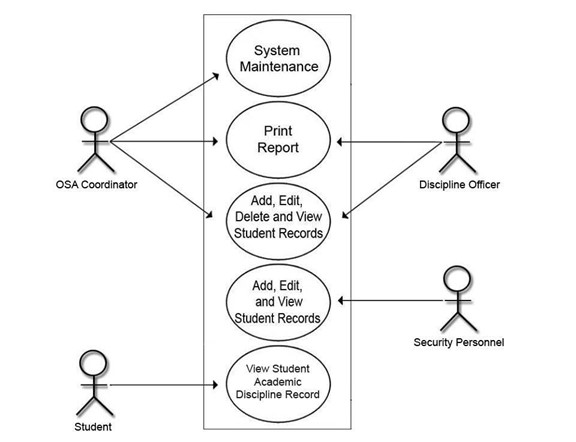
Figure 4: Use Case Diagram of ABC Student Academic Discipline System
Data Flow Diagram (Gane – Sarson)
The Data Flow Diagram and Context Diagram explain the flow of the system that begins when the administrators and the staff encode students’ academic and discipline violation records. By the time the records are encoded, they will automatically be saved into the system database. The students have the capability to view only the Academic Discipline Violations record while the Security Personnel can add and edit student discipline violation records. Then, only the Guidance Counselor and Discipline Officer can generate and print reports at the end of any transaction that will be used in making student violation reports by the end of a semester. The proponents used and follow the Gane and Sarson Data Flow Diagram notations that was developed by Chris Gane and Trish Sarson.
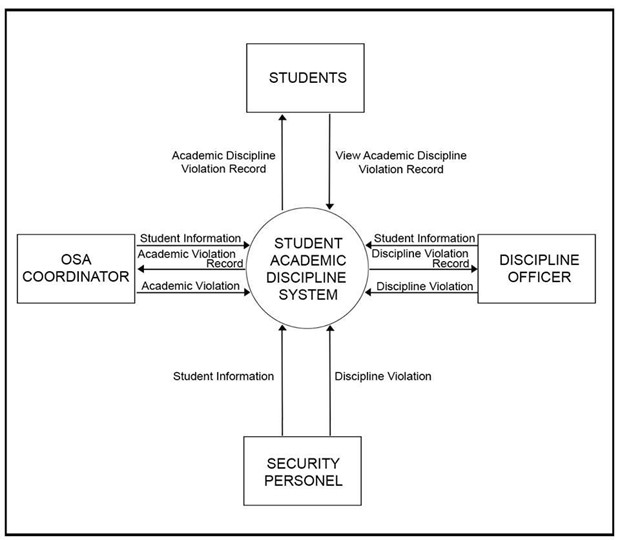
Figure 5: Context Diagram of the ABC Student Academic Discipline System

Figure 6: Data Flow Diagram for Academic Violation
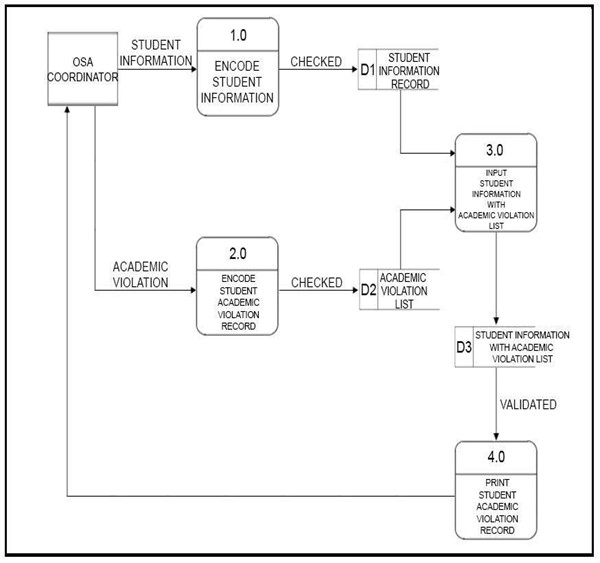
Data Dictionary
Table 5.0: Archive Table
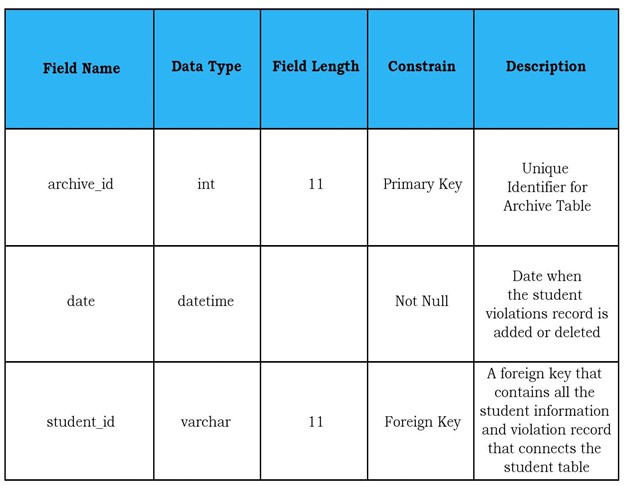
Table 5.1: Student Record Table
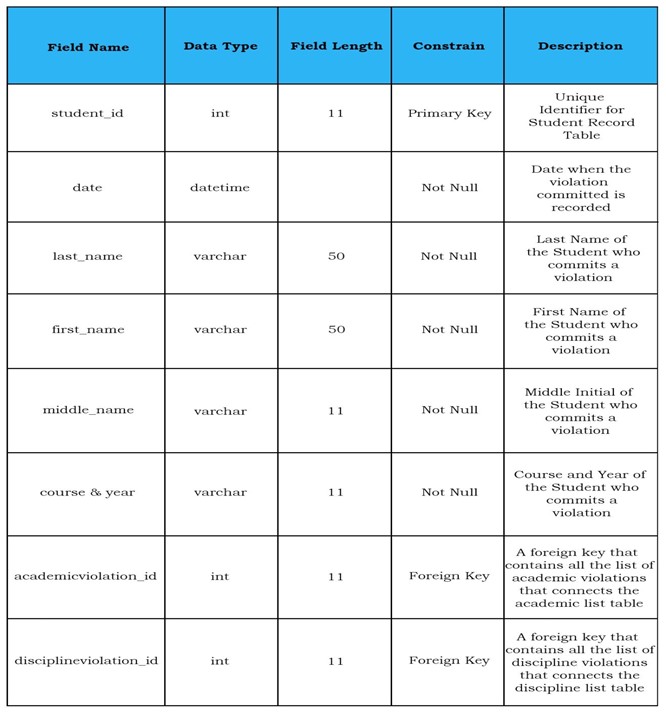
Table 5.2: Academic Violation List Table
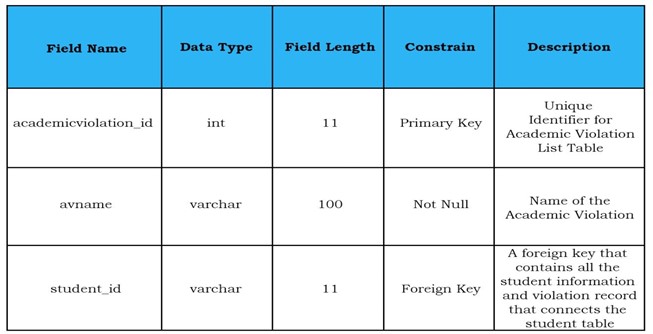
Table 5.3: Discipline Violation List Table
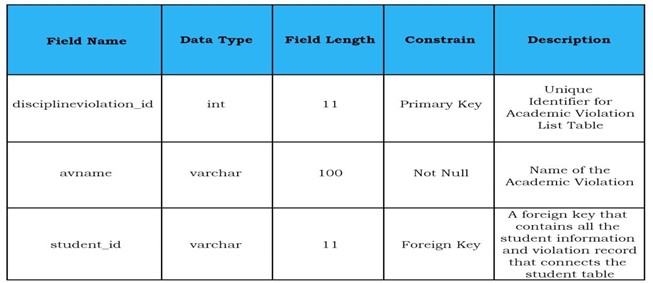
Table 5.4: Student Consequence Table
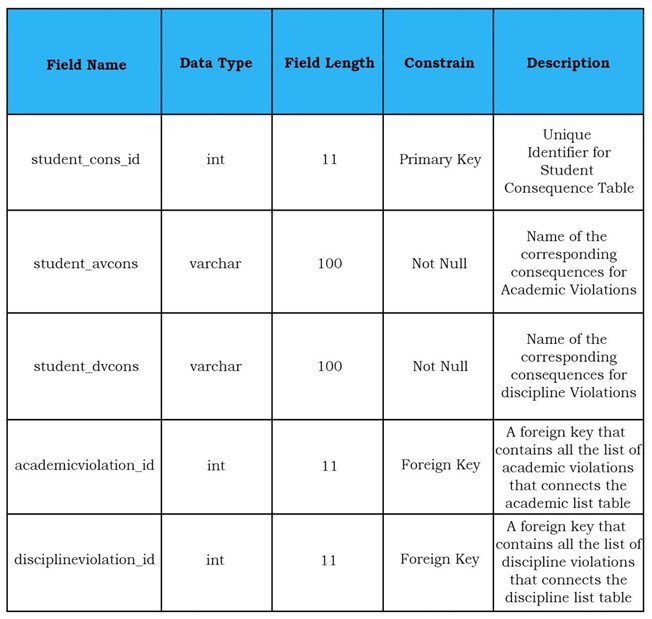
Table 5.5: Student Violations Report Table

Table 5.6: User Table
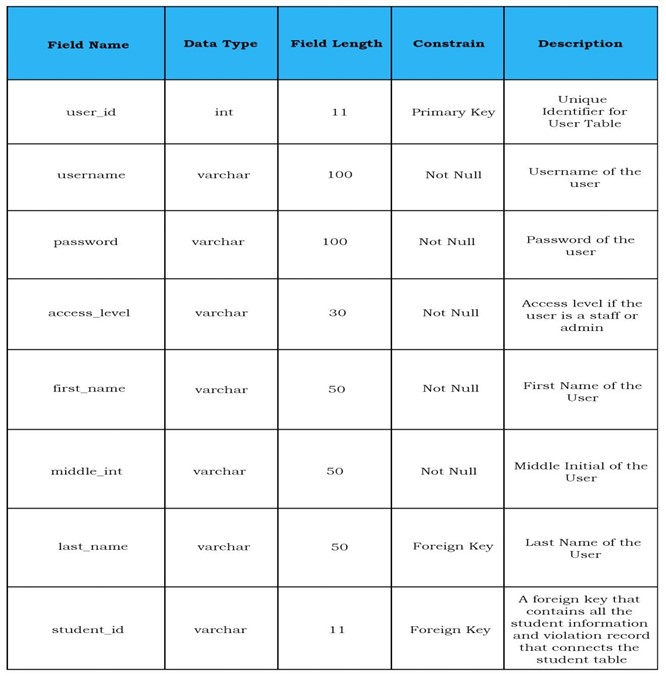
Table 5.7: User Category Table

Entity Relationship Diagram (Crow’s Foot)
Entity Relationship Diagram explains every relationship of the table’s entity and attributes in a database. Tables are connected by the use of attributes called the Primary and Foreign Keys. Each attribute connects in performing every process. The proponents used and follow the Crow’s Foot Entity Relationship Diagram notations that were initially developed by Gordon Everest.
Figure 8: Entity Relationship Diagram
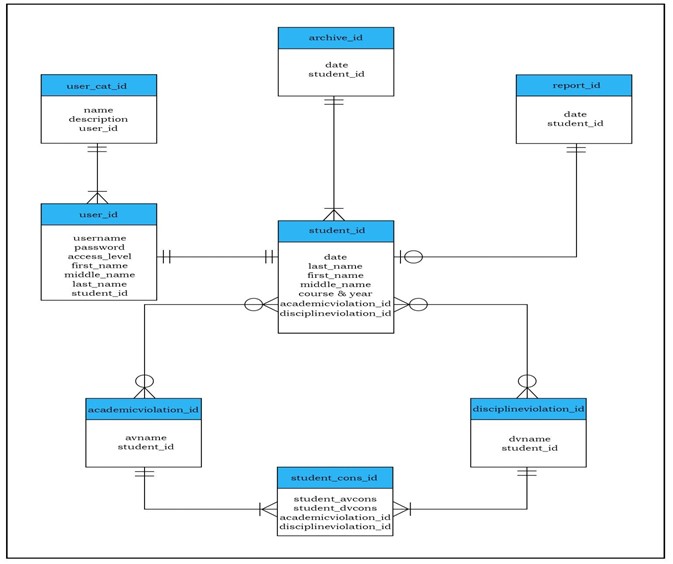
Entity Relationship Diagram
Presentation, Analysis, And Interpretation Of Data
This chapter exhibits the findings, analysis, and interpretation of data gathered whose main objective is to find out the expectations and perceptions of the users. It is necessary to analyze the data collected in order to test the hypothesis and meet the objectives of the study.
Presentation
The proponents explain and demonstrate the system’s functionality to be evaluated by the selected respondents. Present data and documents were studied to meet the criteria communicated in the statement of the objectives. The ratings that will be given by the respondents will be based on the User Acceptance Survey form to determine the level of acceptability of the proposed system.
Analysis and Interpretation of Data
This section presents the analysis and interpretation of data collected from the respondents. The analysis and interpretation of data will be carried out into two parts. First, it will be based on the results of a questionnaire that deals with quantitative analysis of data. Second, will be based on the results of the interview and focused group discussions which deal with a qualitative analysis of data.
Characteristics of the Respondents
Table 6.0: Frequency of Respondents
| Respondents | Frequency |
| OSA Coordinator | 1 |
| Discipline Officer | 1 |
| Security Personnel | 6 |
| Total | 8 |
The evaluation of the system shows the detailed assessment done by the School OSA Coordinator, Discipline Officer, and Security Personnel. The proponents will demonstrate and explain the functionality of the system and it will be evaluated and tested by the respondents based on the evaluation form.
This table shows the number of respondents in the study. The proponents got a total of 8 respondents from the school administrations that were tasked to be the users of the proposed system.
System Evaluation
The collected data were tabulated and analyzed. To interpret the result, the proponents used Yamane’s Formula to get the average value or the mean for each given criteria.
Yamane’s Formula:
n = mean
N = total number of respondents
e = level of precision 0.05 % (5%)
Solution:
This solution explains the summation of getting the mean (n) of the number of respondents that will be taking the user acceptance survey. Where N=8 divided by 1+8 multiplied by 0.0025 as (e) or the level of precision. As the proponents get the (e), it is divided by 8 as the total number of respondents (N). The result was 8 for the mean (n).
Interpretation of Data
Table 6.1: Interpretation of Data
| Range Of Mean | Descriptive Interpretation |
| 4.21-5.00 | Very Satisfied |
| 3.41-4.20 | Satisfied |
| 1.81-2.60 | Dissatisfied |
| 1.00-1.80 | Very Dissatisfied |
The ratings given by the respondents on different criteria of acceptability were tabulated and analyzed on the basis of weighted mean and qualitatively rate in terms of five (5) categories namely: Effectiveness, Efficiency, Quality, Timeliness, and Productivity. The first category was composed of four (4) items, the second category was composed of three (3) items, and the third, fourth and last categories were composed of four (4) items.
Survey Result
Effectiveness
Table 7.0: Survey Result – Effectiveness
| Effectiveness
|
Question 1 | Question 2 | Question 3 | Question 4 | Total Mean | Verbal Interpretation |
| Mean | 5.0000 | 4.8750 | 5.0000 | 4.8750 | 4.9375 | |
| N | 8 | 8 | 8 | 8 | 8 | Very Satisfied |
| Std. Deviation | .00000 | .35355 | .00000 | .35355 | .11573 | |
This table shows that the total mean for the effectiveness of the system is 4.93, which results in a value score of Very Satisfied, indicating that the respondents are contented with the system’s effectiveness.
The respondents indicated that the proposed system (ABC SADS), meets the desired objectives of producing reliable output by keeping track of records with minimum data redundancy and reduction of paper works. They also stated that the system is effective in determining the list of violations committed by the students both in Academic and Discipline violations.
Efficiency
Table 7.1: Survey Result – Efficiency
| Efficiency | Question 1 | Question 2 | Question 3 | Total Mean | Verbal Interpretation |
| Mean | 5.0000 | 4.7500 | 4.7500 | 4.8333 | |
| N | 8 | 8 | 8 | 8 | Very
Satisfied |
| Std. Deviation | .00000 | .46291 | .70711 | .35635 | |
This table shows that the total mean for the efficiency of the system is 4.83, which results in a value score of Very Satisfied, indicating that the respondents are contented with the system’s efficiency.
The respondents indicated that the proposed system (ABC SADS) has the capability to provide enough information to its user by identifying the list of students that commits a violation in terms of Academic and Discipline. The system’s efficiency was also superb in terms of its ease of use and operability as shown in the result.
Quality
Table 7.2: Survey Result – Quality
| Quality | Question 1 | Question 2 | Question 3 | Question 4 | Total Mean | Verbal Interpretation |
| Mean | 5.0000 | 4.8750 | 4.6250 | 5.0000 | 4.8750 | |
| N | 8 | 8 | 8 | 8 | 8 | Very
Satisfied |
| Std. Deviation | .00000 | .35355 | .51755 | .00000 | .18898 | |
This table shows that the total mean for the quality of the system is 4.87, which results in a value score of Very Satisfied, indicating that the respondents are contented with the system’s quality.
The respondents indicated that the proposed system (ABC SADS), meets the desired quality and standards for its user in terms improving data quality, and determining a secure way of keeping student violation records.
Timeliness
Table 7.3: Survey Result – Timeliness
| Timeliness | Question 1 | Question 2 | Question 3 | Question 4 | Total Mean | Verbal Interpretation |
| Mean | 5.0000 | 4.6250 | 5.0000 | 5.0000 | 4.9063 | |
| N | 8 | 8 | 8 | 8 | 8 | Very
Satisfied |
| Std. Deviation | .00000 | .74402 | .00000 | .00000 | .18601 | |
This table shows that the total mean for the timeliness of the system is 4.90, which results in a value score of Very Satisfied, indicating that the respondents are contented with the system’s timeliness.
The respondents indicated that the proposed system (ABC SADS), has the ability to determine a timely update of the list of students who commit violations regarding Academic and Discipline violations. The system also can generate accurate and reliable reports in an acceptable response time.
Productivity
Table 7.4: Survey Result – Productivity
| Productivity | Question 1 | Question 2 | Question 3 | Total Mean | Verbal Interpretation |
| Mean | 4.8750 | 4.8750 | 4.8750 | 4.8750 | |
| N | 8 | 8 | 8 | 8 | Very
Satisfied |
| Std. Deviation | .35355 | .35355 | .35355 | .17252 |
This table shows that the total mean for the productivity of the system is 4.87, which results in a value score of Very Satisfied, indicating that the respondents are satisfied with the system’s productivity.
The respondents indicated that the proposed system (ABC SADS), has the ability to produce a precise and detailed input or data resulting for a high quality of output or reports. Thru this the users have the capability to have an easy way of sharing resources of student academic and discipline violation records.
Over All
Table 7.5: Survey Result – OverAll
| OVERALL | Verbal Interpretation | ||
| Mean | N | Std. Deviation | Very Satisfied |
| 4.7500 | 8 | .46291 | |
This table shows that the total mean for the ABC Fortune Towne Student Academic Discipline System is 4.7500, which results for a value score of Very Satisfied, indicating that the respondents are very contented with the proposed system after testing it in terms of Effectiveness, Efficiency, Quality, Timeliness, and Productivity.
Summary Of Findings, Conclusions, And Recommendations
This chapter presents the summary of work undertaken, the conclusions drawn, and the corresponding recommendations based on the data analysis in the previous chapter. The conclusion will be based on the research questions and the results of the study. The summary of these findings will also be explained, as the recommendations will be based on the purpose of the study.
Summary of Findings
This study was taken with the general objective of developing an automated system for monitoring Student’s Academic Discipline Records in ABC-Fortune Towne through the implementation of a local area network (LAN) in terms of Effectiveness, Efficiency, Quality, Timeliness, and Productivity of the system. The findings were discussed according to the categories given based on the questionnaire that served as an instrument for the collection of data.
A total of eight respondents took part in this research. The eight respondents were conducted using a prepared structured questionnaire (User’s Acceptance Survey). The findings of the survey were presented and discussed in Chapter 4.
The findings of the study based on the categories given are as follows:
Effectiveness
The respondents’ assessed the proposed system in terms of Effectiveness as Very Satisfied with a total mean of 4.93.
Efficiency
The respondents’ assessed the proposed system in terms of Efficiency as Very Satisfied with a total mean of 4.83.
Quality
The respondents’ assessed the proposed system in terms of Quality as Very Satisfied with a total mean of 4.87.
Timeliness
The respondents’ assessed the proposed system in terms of Timeliness as Very Satisfied with a total mean of 4.90.
Productivity
The respondents’ assessed the proposed system in terms of Productivity as Very Satisfied with a total mean of 4.87.
Overall, the rating of the system has collected a mean of 4.75 which is interpreted as a Very Satisfied rating. The findings revealed that the majority of the respondents are very satisfied with how the system works in terms of its functionalities in meeting the requirements and features needed based on its objectives.
Conclusions
Based on the findings of the study the following conclusions are drawn:
- The developed system which is the ABC Student Academic Discipline System was found very satisfactory in functionality in terms of Effectiveness, Efficiency, Quality, Timeliness, and Productivity of the system.
- The proponents concluded that the developed system is fully operational and ready to be used.
- The proponents concluded that the developed system was able to address the necessary automation requirement of the College in terms of monitoring the student’s academic and discipline violations.
- The proponents concluded that the developed systems were able to meet their objectives in providing easy and faster access to monitoring students’ academic and discipline violations thru the implementation of LAN.
- The proponents concluded that the developed system can help the school for accreditation purposes.
Recommendations
Based on the aforementioned findings and conclusions presented, the following recommendations are suggested:
- The Student Academic Discipline System was developed and implemented in the ABC Campus.
- The proponents proposed to request one unit of the high-end computer from the ABC- FT management to be placed in the school security personnel area (Guard House) as they are one of the users of the developed system.
- The system shall have proper maintenance every 6 months to sustain and update its functions and also for the security of its databases.
References
Abdul, R. (n.d.). Chapter1-Introduction to Automation.pdf | Automation | Subroutine. Retrieved June 9, 2018, from https://www.scribd.com/document/282809390/Chapter1-Introduction-to-Automation-pdf
dictionary.com. (n.d.). Retrieved June 16, 2018, from http://www.dictionary.com/browse/academic
Discipline System / Discipline System. (n.d.). Retrieved March 19, 2018, from https://www.holmen.k12.wi.us/domain/1195
Financial Times Lexicon. (n.d.). Retrieved June 16, 2018, from http://lexicon.ft.com/Search?searchText=paper_based
Hard Copy Bond Paper/Ink Toner/Shopee.ph. (n.d.). Retrieved September 25, 2018, from https://shopee.ph/Hard-Copy-Bond-Paper-Short-Letter-Size-1-Ream-i.60905512.1237084867
Juliet Nandutu. (13:22:02 UTC). STUDENT RECORD MANAGEMENT SYSTEM (1). Retrieved from https://www.slideshare.net/JulietNandutu/student-record-management-system-1-63051646
Computers/Printers prices in the Philippines 2018. Priceprice.com. (n.d.). Retrieved September 25, 2018, from http://ph.priceprice.com/computer-accessories/?sub-category=printers-14
Robinson, L. (2015, August 19). What is a system? Retrieved June 16, 2018, from https://changeologyblog.wordpress.com/2015/08/19/what-is-a-system/
Rouse, M. (2017, February). database (DB). Retrieved June 16, 2018, from https://searchsqlserver.techtarget.com/definition/database
Salary For PROGRAMMER | JobStreet.com. (n.d.). Retrieved September 25, 2018, from https://myjobstreet.jobstreet.com.ph/career-enhancer/basic-salary-report.php?param=PROGRAMMER%7C000%7Cph%7C%7Cph
Student Profiling Information System in Guidance Office. (n.d.). Retrieved March 19, 2018, from https://www.inettutor.com/source-code/student-profiling-information-system-in-guidance-office/
Thesis Presentation. (2012, September 3). Retrieved March 19, 2018, from https://prezi.com/vlg3aeyqeyex/thesis-presentation/wattmatters | Consumption Calculator. (n.d.). Retrieved September 5, 2018, from http://www.wattmatters.org.ph/consumption/calc

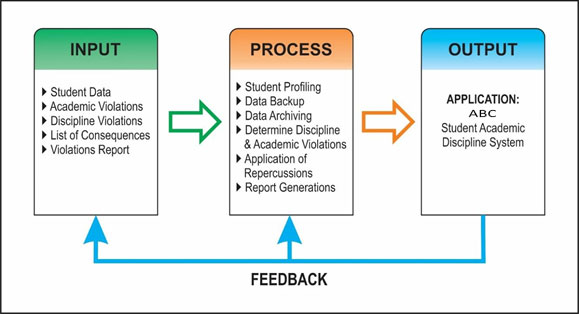
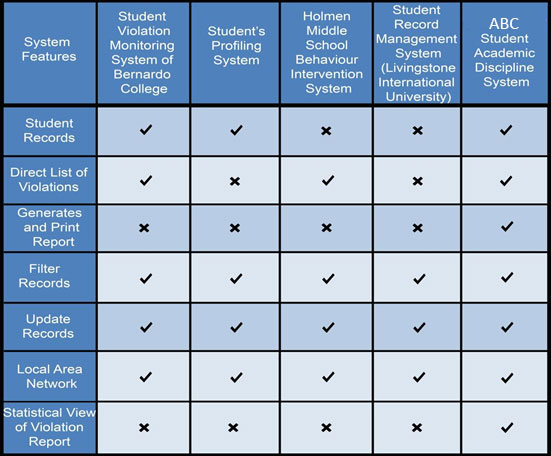
Leave A Comment
You must be logged in to post a comment.